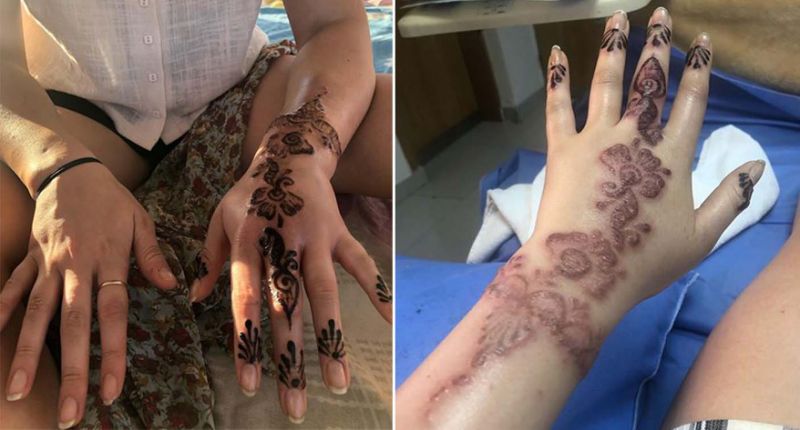


An Australian woman on the trip of a life time in Egypt almost lost her hand after suffering an “awful reaction” to a henna tattoo.
Brooke Crannaford, an Adelaide woman now living in Melbourne, was visiting a village in the city of Aswan, on the Nile River, when she decided to get the body art from a local woman.
Ms Crannaford, who was 25 at the time of the incident in November last year, decided to get the $5 henna design on her left wrist and hand – but just hours after the application she felt something wasn’t right.
“At first, a few hours after it was applied I started to feel really itchy, and then progressively over 24 hours it got worse and worse,” she said.
By the time Ms Crannaford was able to get access to a doctor, she was starting to lose feeling in her fingers from cellulitis, a bacterial skin infection.
“They diagnosed me with stage 3 cellulitis and a severe chemical/second or third degree burn,” she said.
“I was extremely lucky not to lose any digits.”
Ms Crannaford said it took three weeks for the wound to heal enough to leave it uncovered and another week on top of that before she could return to work.
Doctors warning for families travelling overseas
To tie in with school holidays around Australia, doctors have issued a warning for families travelling overseas to be aware of the dangers of henna.
Dr Ryan Harvey from House Call Doctor has urged parents to think twice before allowing their children to get the temporary tattoos.
“While many parents think getting a temporary henna tattoo is harmless holiday fun, it can lead to permanent scarring,” Dr Harvey said.
“Unlike here in Australia, there may not be any regulation of what goes into the dye, and children in particular, can have extreme reactions that can cause blistering, open sores and a chemical burn.
“It looks like the patient has suffered an extreme allergic reaction to something in the dye and it’s caused a chemical burn to the skin.”
The type of henna that causes the burns is usually black henna, which contains an ingredient called paraphenylenediamine (PPD).
PPD is commonly used in hair dye and is an extremely toxic chemical for the skin, causing chemical burns, blisters and scarring, according to House Call Doctor.
Those wanting a proper henna tattoo should be sure that it’s natural henna, which is made entirely out of plant-based ingredients.
Real henna will be an orange colour with a red or brown tint. Any temporary tattoos with dark tints should be treated with caution.
Original Source: Yahoo News Australia | 10 July 2019




